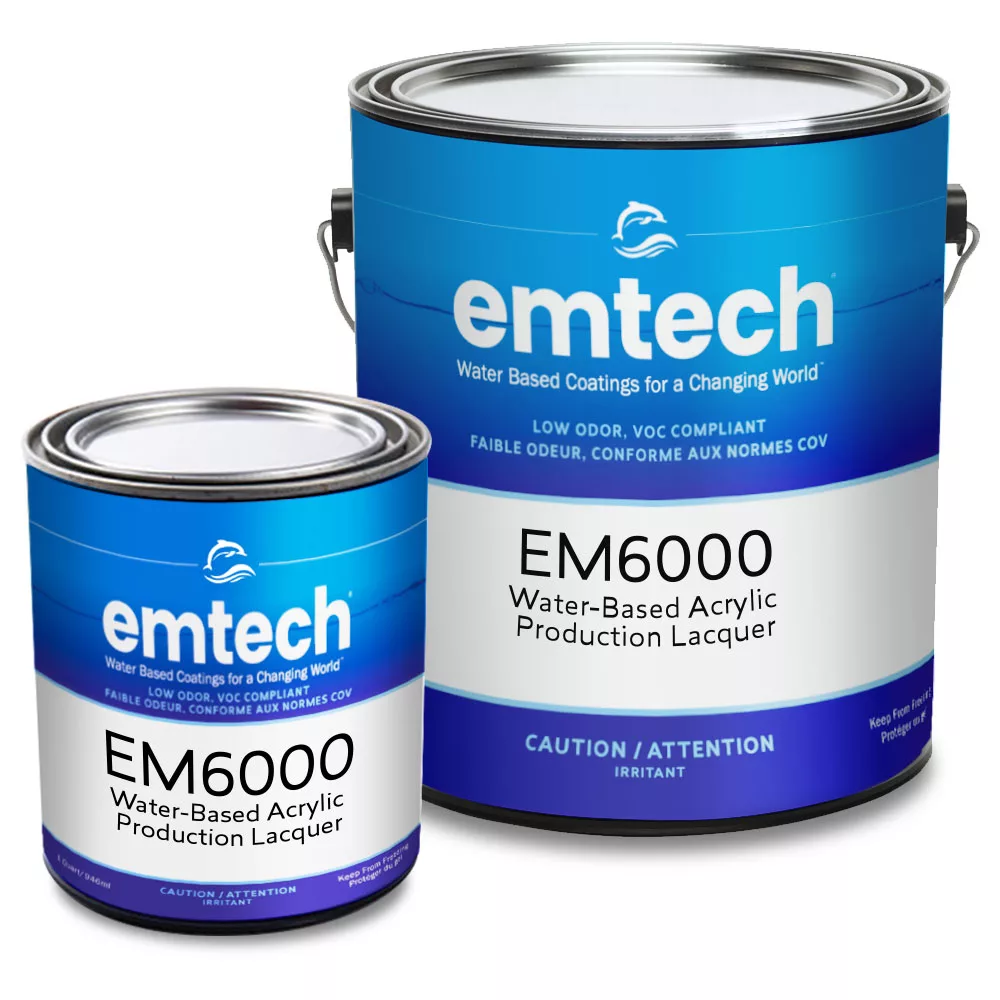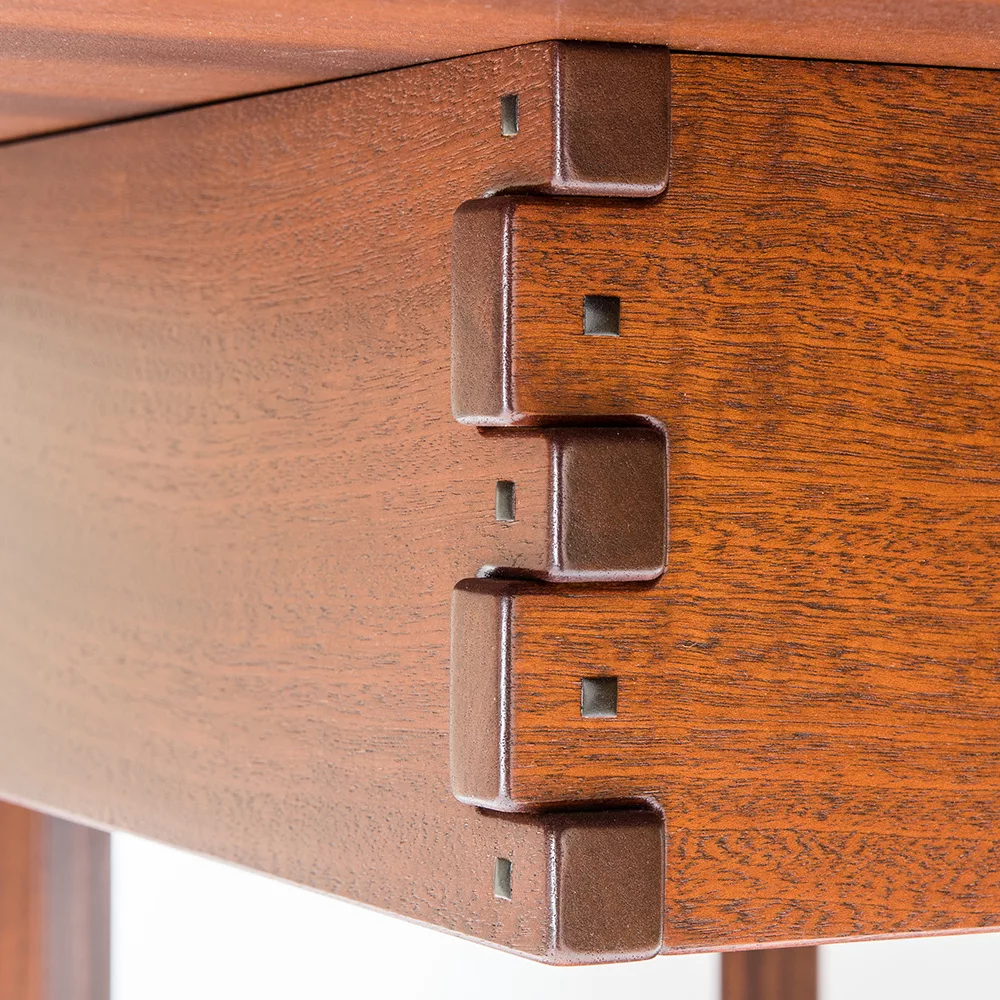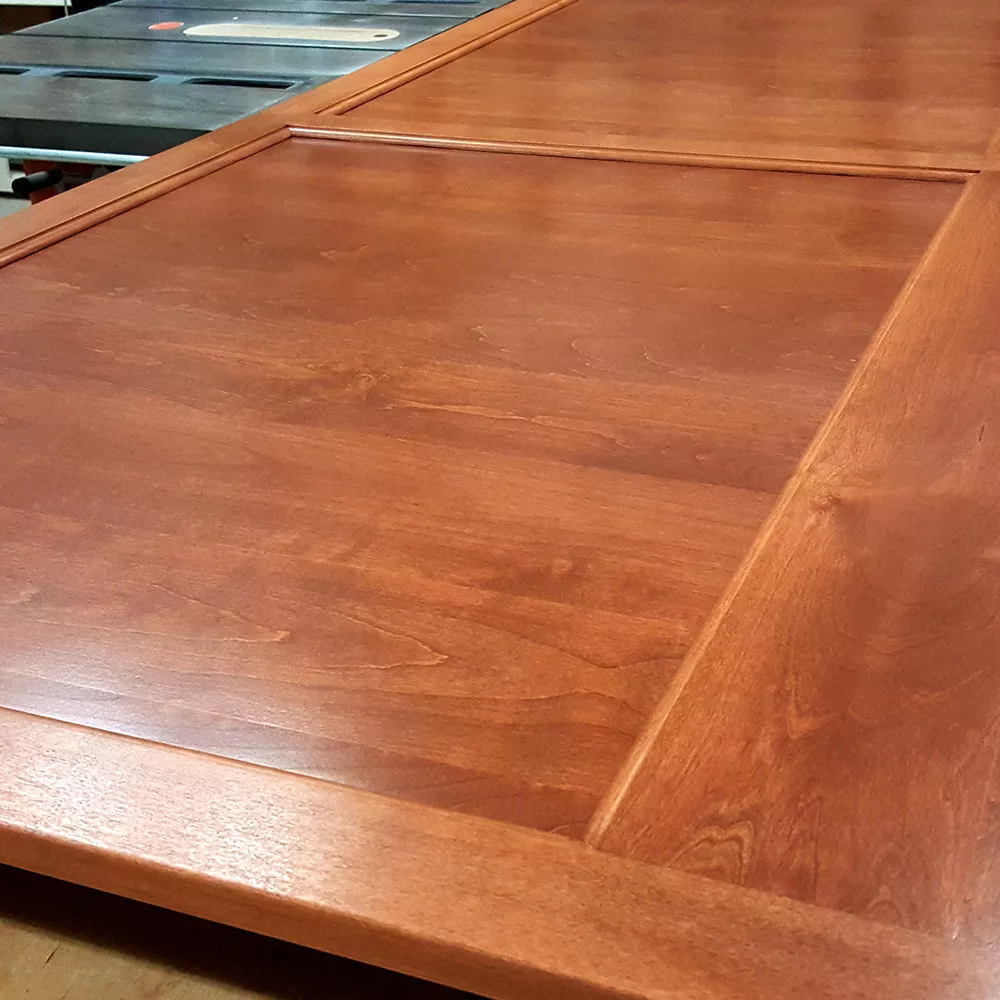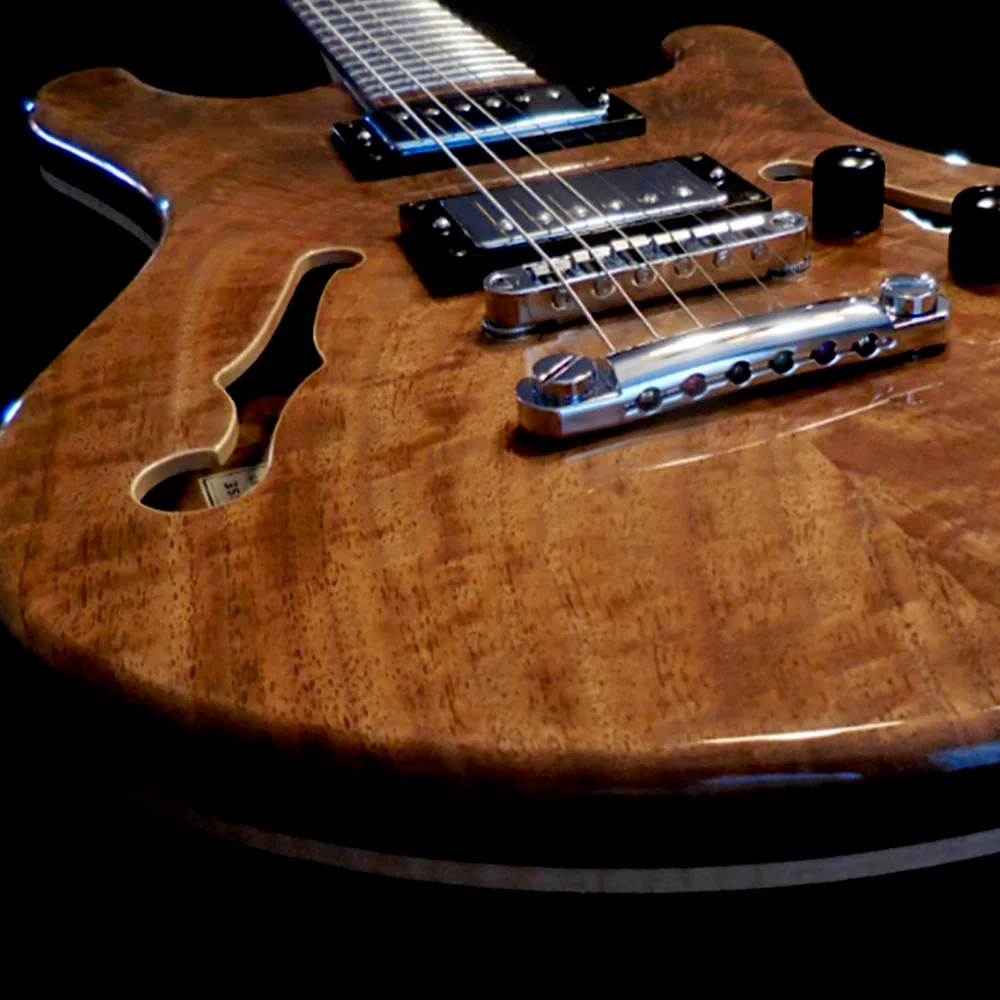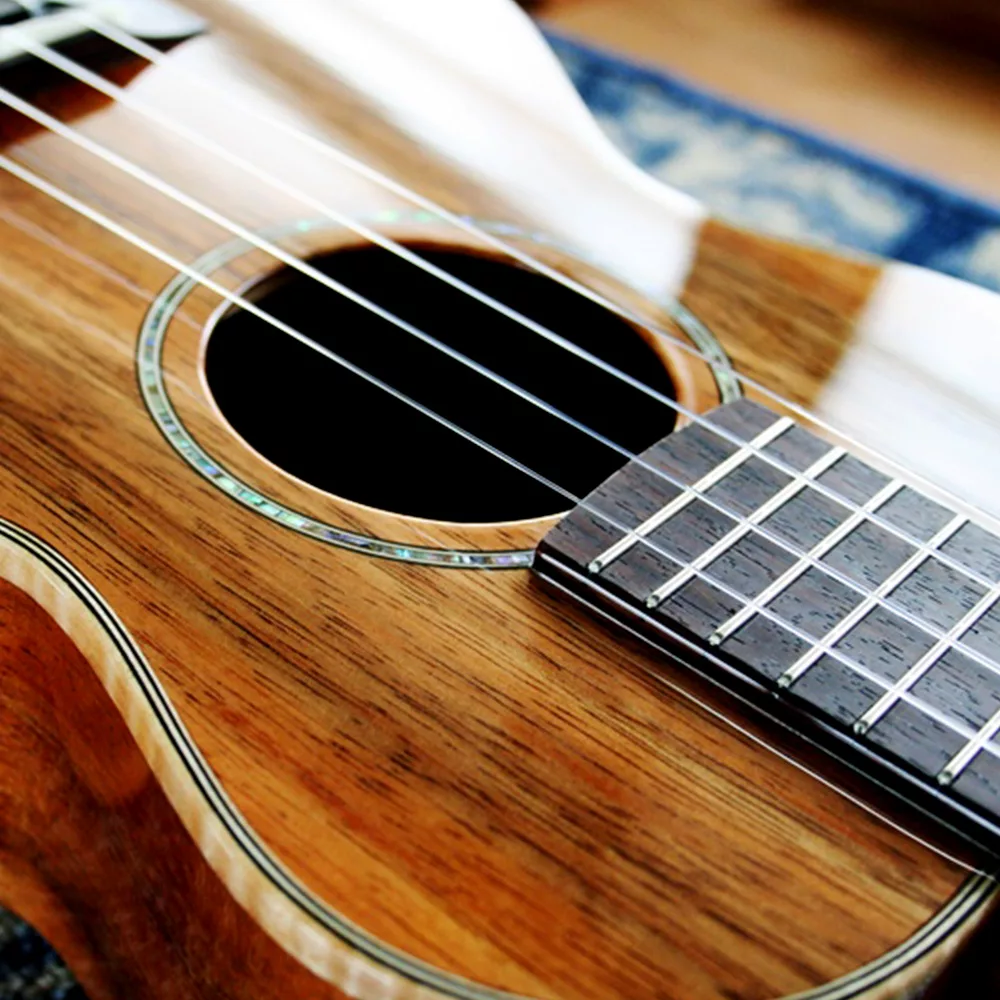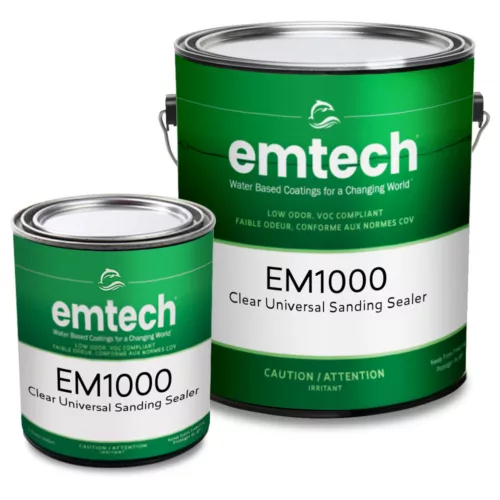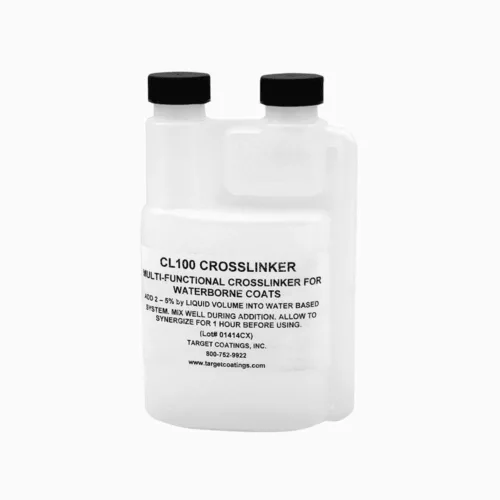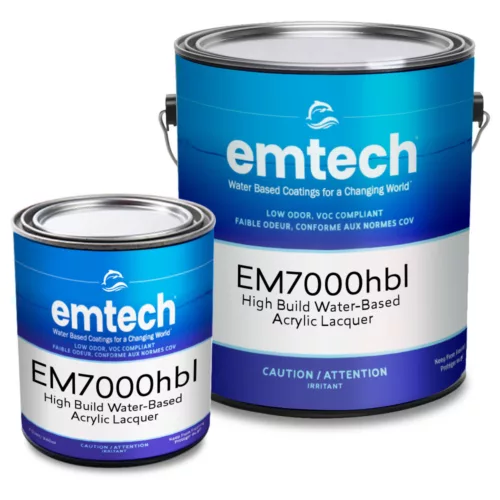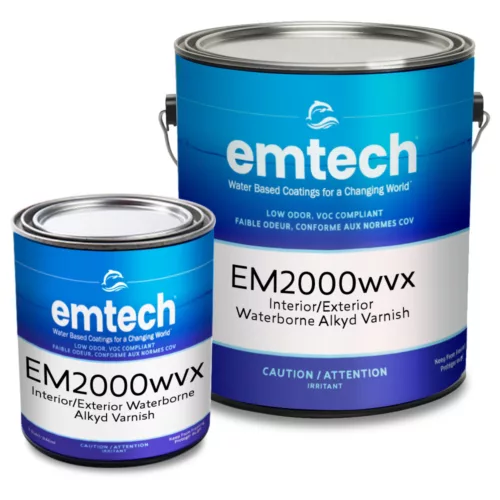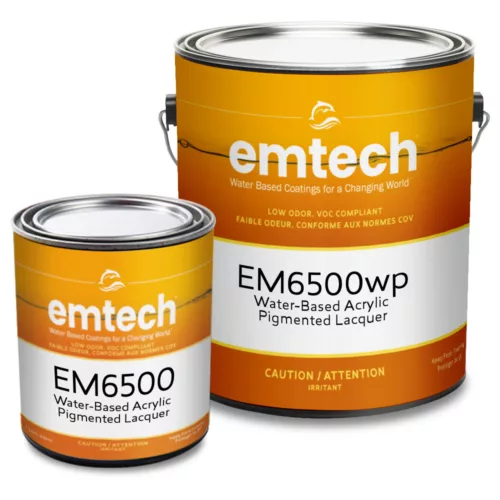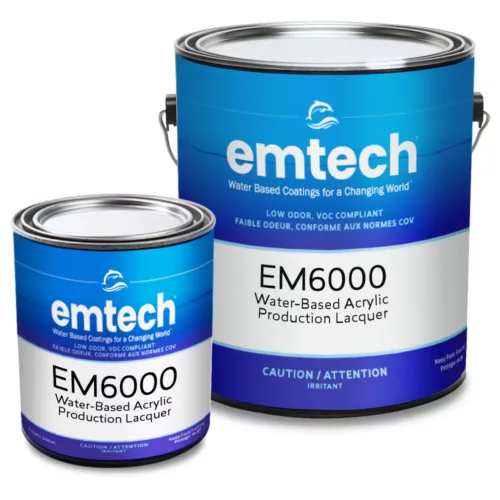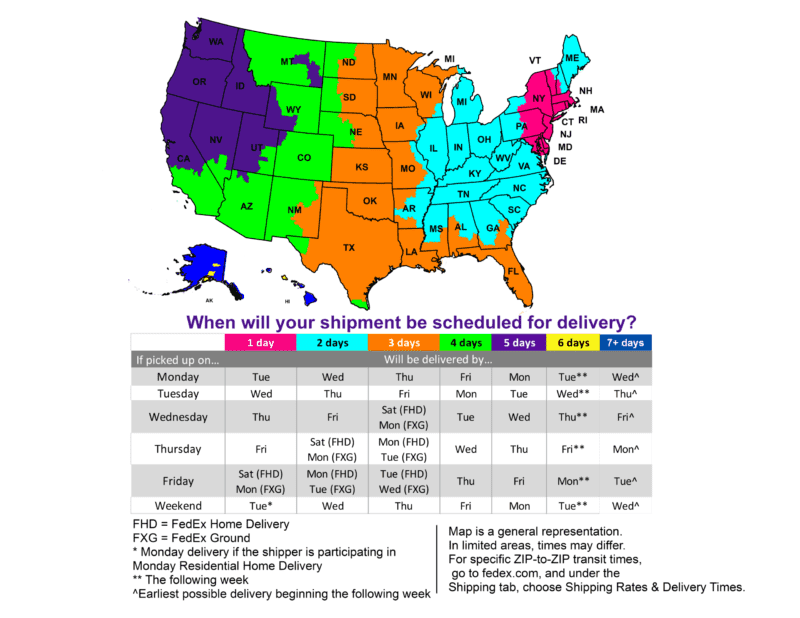EM6000: Versatile, Easy to Spray, Beautiful
100% Burn-In Technology in a water based Formula
EM6000 Production Lacquer is a warm, ultra-clear, water based lacquer that utilizes advanced polymer resins and HAPS-Free solvent technologies to provide 100% burn-in functionality and a unique, self-leveling lacquer finish. EM6000 Production Lacquer is formulated for use in a wide range of applications as a superior replacement for nitrocellulose lacquer. Our production wood lacquer provides a fast drying lacquer system with exceptional clarity, outstanding adhesion qualities and a nitrocellulose-type appearance and performance, all in an Ultra-Low VOC, 100% water based system. Unlike other solvent-based and oil-based lacquers, EM6000 Production Lacquer is non-flammable, cleans up with soap and water, and makes storage and disposal safe and simple.
Solvent Look and Feel
EM6000 Production Lacquer, offers fast drying and sanding features identical to those of traditional nitrocellulose lacquers and CAB acrylic systems. Our Production Lacquer generates excellent clarity and color definition when used with a sealer, like EM1000 Universal Sanding Sealer, or as a self-sealing, stand-alone production finish. When cured, EM6000 Production Lacquer has a smooth, hard finish that’s stronger than nitrocellulose lacquer. Our Production Lacquer has a soft, warm appearance that will slightly amber with age just like its solvent counterpart.
Instructions for Use
View Instructions for EM6000 Production Lacquer TDS

